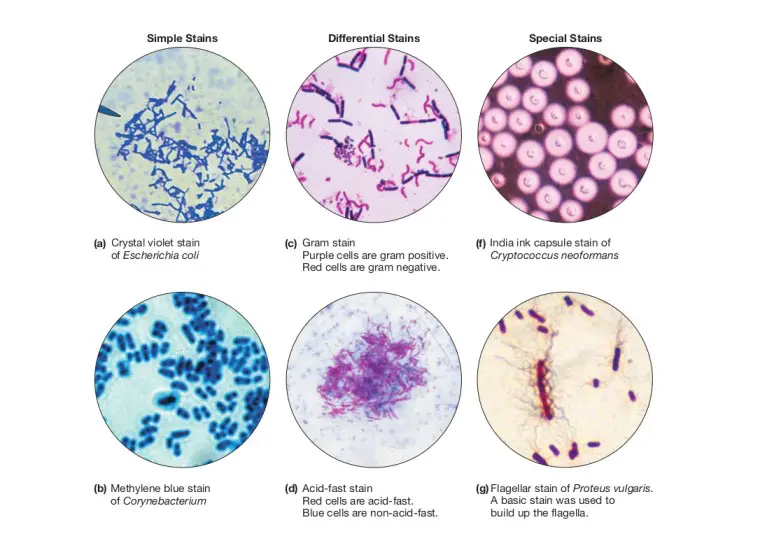Staining
Staining is the process of using colored chemicals (stains/dyes) to impart color to the cells or cell parts. Generally dyes are basic colored chemicals.
The microbes such as bacteria are colorless and the microscopic field are colorless too. To develop contrast between the object and microscopic field staining is done.

Common staining techniques:
- Simple stains:
Single basic dye (saffranin, crystal violet, methylene blue, basic fuschsin) is used as simple stain. These are used to observe shape and size only.
- Negative staining:
Here the background gets stained instead of bacteria(colorless). This is useful in capsule demonstration.
- Impregnation methods:
In some situations, due to thin and delicate cell wall and appendages, they cannot be seen under ordinary microscope. They are thickened by silver impregnation on the surface to make visible under light microscope. Eg. Flagella
- Differential stains:
These are most commonly used stains and impart different colors to different bacteria or their structures. Eg. Gram’s stain, Acid fast stain.